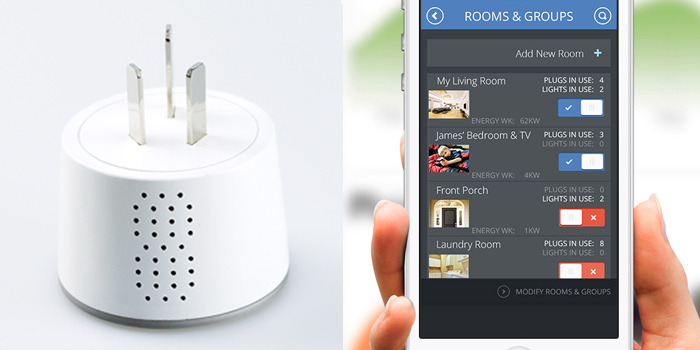Another contender for smart(en)ing up your home has taken to Kickstarter to raise funds. The Beijing-based startup behind Plugaway has put together Wi-Fi connected plugs and LED lightbulbs which, used in conjunction with its Android or iOS app, can remotely switch your appliances on or off, or dim or kill your lights.
The system can also be used to monitor electricity consumption, schedule and time appliances, and set up device alerts and notifications. Or it will, assuming it hits its Kickstarter goal and transitions from the current prototype stage to commercial product (Plugaway is aiming to ship kit to backers next April). It’s very close to making its funding goal at least, with more than $47,500AUD raised of a $50,000AUD target and still 34 days left on their crowdfunding campaign.
Updating standard electrical household objects, such as your trusty old desk lamp, to turn them into smart app-controlled objects — by augmenting them with tech such as Philips Hue’s psychedelic Wi-Fi bulbs — can be an expensive business. It can also, frankly, be a bit of a faff. In the case of Hue a Wi-Fi bridge is required to plug into your router to link the bulbs to your broadband. And that bridge is pricey (and, in my experience, the connection between app and bridge can be flaky — or, at least, it was on an earlier iteration of the tech).
Plugaway’s aim is to reduce the costs of hooking your old school household appliances into the tap-happy convenience of apps. They’re doing this by offering two pieces of kit: smart plugs, so you can plug any appliance in and remotely switch it on or off; and smart LEDs, so you can remotely control lights.
Their Wi-Fi-enabled smart plugs cost $30 a pop — which means Plugaway is undercutting Belkin’s WeMo plugs. And their LED lightbulbs are also priced cheaper than LIFX’s similar kit (which starts at just under $90 a pop — or will when it goes on general sale in retail stores in January).
Plugaway has also decided it needs to embrace openness to get under the skin of big name competitors in this space — so, for instance, it’s going to let users customise its app:
We have decided to let everyone, including small firms, interior designers, developers, restaurant owners, even hobbyists, build an app in their own style with limitless functionality, share their skins on our website and brand the software with their logotypes. In short – to give it your personality.
Its openness also extends to interoperability with other apps and services, such as IFTTT, or other open smart home devices & systems.
Our open software means two things. Developers are able to integrate other devices into the app and share their add-ins. The other is that Plugaway will also be compatible with other systems, so you don’t even need to use our app unless you absolutely want to! Provided your existing system is open, you may use the Plugaway app’s API to connect with your current home-automation system.
Plugaway’s project is also an interesting study in how to polish the gem of an idea into something with more commercial potential with the help of the Kickstarter community. Its original Kickstarter for the Plugaway smart plug concept, kicked off back in May, but it subsequently decided to cancel the project to rethink the design of the plug (1960s orange wasn’t proving too popular with backers), and to make being an open platform more of a focus.
It also evidently spent some time polishing its Kickstarter pitch, as the before and after videos show. Here’s the earlier one, and below is the new pitch:
